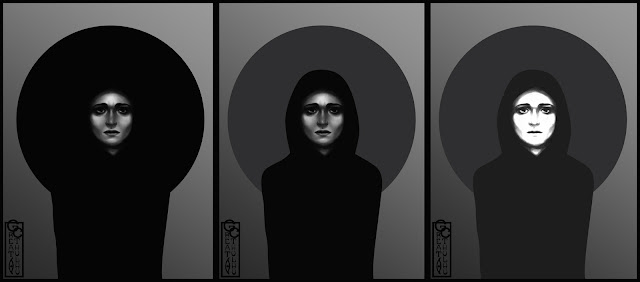Mangosteen from A to Z: 26 Things to Know

MANGOSTEEN FROM A TO Z: 26 THINGS TO KNOW
A list of mangosteen facts and figures you can't miss: varieties, nutritional facts and how to enjoy this tropical fruit at its best.
Aroma. The flesh of Mangosteen has a unique aroma which is exceptionally subtle and sweet (1/400 of the chemical components of aromatic fruits), with grassy floral notes of caramel and butter.
Button mangosteen. Garcinia prainiana is closely related to common mangosteen. This variety also comes from south east Asia. It has a fine orange skin and a flavour similar to, yet distinct from, its purple cousin.
Charichuelo. Another fruit belonging to the Garcinia family, Garcinia madruro, from South and Central America: for this reason it is called “mangosteen of the New World”. Externally it looks like a withered and wrinkled lemon and its sweet flesh has a slightly citric taste, like the mangosteen.
Dye. The thick purple rind is used at times to make natural dyes: the fruit needs to be handled carefully to avoid staining clothes and napkins indelibly.
El Bulli. Former pastry chef of El Bulli, Will Goldfarb has opened a venue in Bali. One of his special dishes is burnt cream with cocoa paste, drops of mangosteen bitters and Balinese sea salt.
Filipino. The mangosteen is very popular in Philippine cuisine. Even its tasty seeds are used – boiled or roasted – and the flesh of the fruit finds its way into numerous preparations as in mangosteen glazed tuna belly.
George Calombaris. On a recent visit to Sri Lanka, the celebrated Australian Master Chef fell in love with the local mangosteen and improvised one of his creations: the fruit is cut into two halves and filled with a vanilla ice-cream base, followed by mangosteen sorbet and topped with lemon meringue.
Halt! In some countries it is illegal to import this fruit fresh – which mainly comes from Thailand – because of the Asian fruit fly. So it may only be bought frozen or preserved in syrup. More recently, this ban has been lifted in several important markets comprising the United States.
Ice-cream. The greatest “plant explorer” of American history, David Fairchild, loved mangosteen. The botanist wrote: “It is so delicate that it melts in the mouth like ice cream. The flavor is quite indescribably delicious. There is nothing to mar the perfection of this fruit……”.
Juice. The precious xanthones of mangosteen are mainly to be found in its rind, which cannot be eaten as it is, so has to be used in the form of extracted fruit juice.
Kcal. The calorie content of this fruit is generally low, around 63/73 kcal.
Leaves. Mangosteen leaves are edible: in Cambodian cuisine, for instance, they appear in a dish of baked fish.
Moluccas. The Moluccas Islands and the Sunda Islands of Indonesia are where mangosteens originally come from.
Nutrition. The fruit contains various essential nutrients: mineral salts, comprising potassium, first and foremost, important vitamins such as vitamin C, fibres and other elements.
Ovaries. The edible fruit consisting in the fragrant white flesh enwrapping each seed is actually the inner layer of the ovary.
Purple. The fruit widely known as “mangosteen” is the “purple mangosteen”, Garcinia Mangostana, which owes its name to the deep purplish-red colour characterising the rind when the fruit is ripe.
Queen. The story goes that Queen Victoria once offered 100 pounds of sterling silver to whoever could supply her with a fresh mangosteen. This could be the reason why the mangosteen has earned its nickname of “Queen of fruits”.
R. W. Apple Jr. The famous gourmet journalist of the New York Times once said: "No other fruit, for me, is so thrillingly, intoxicatingly luscious... I'd rather eat one than a hot fudge sundae, which for a big Ohio boy is saying a lot."
Super fruit. The mangosteen has numerous proven therapeutic properties thanks to which it is classified as a so-called “super fruit”.
Tea. Mangosteen rind may be dried and used to prepare excellent, health-giving herbal teas.
Union. Which ingredients team up well with mangosteen? Lemon grass, lemons and citrus fruit in general, other fruits such as pineapple and apples, butter, vanilla, cucumbers and peanuts, for instance.
Vesicles. Despite its appearance, the mangosteen is rich in juice, contained in its vesicles, which are similar to the peel of citrus fruits.
Waikiki Beach. Mangosteen is a delicious fruit for adding to cocktails. For example, the Shaka Sour, served in the Honolulu restaurant of chef Michael Mina looking out onto the most famous beach in the world. Mangosteen, yuzu, Lillet Blanc and Death’s Door gin.
Xanthone. Together with tannins, these are the principal phenolic acids responsible for the astringency of this fruit, which repels insects.
Young. Xanthones and other compounds to be found in this fruit have powerful antioxidant properties and benefit the organism in general.
Zone. Mangosteen trees will only grow and thrive in tropical climate zones. Any attempts to plant them in other climates, such as those of California and Florida, have met with scarce success.
http://bit.ly/2gonDkj


Comments
Post a Comment